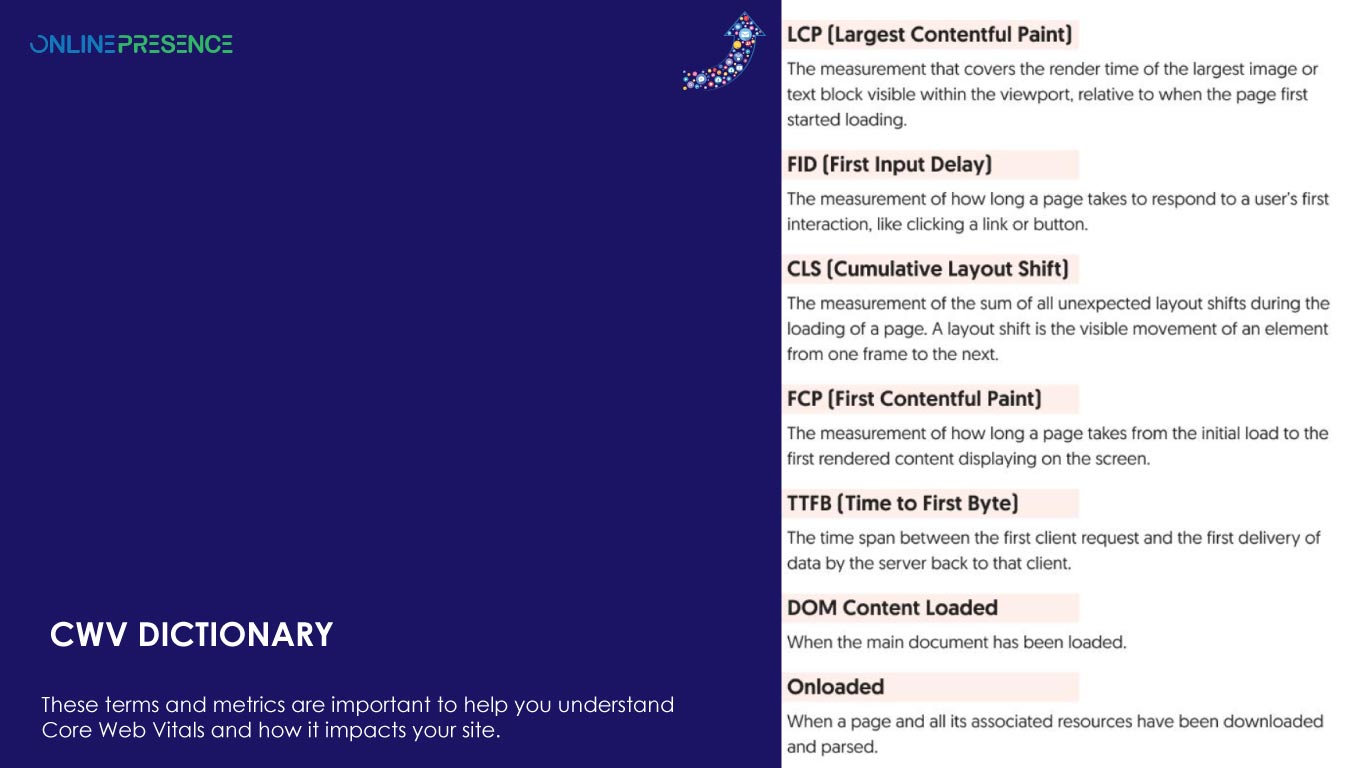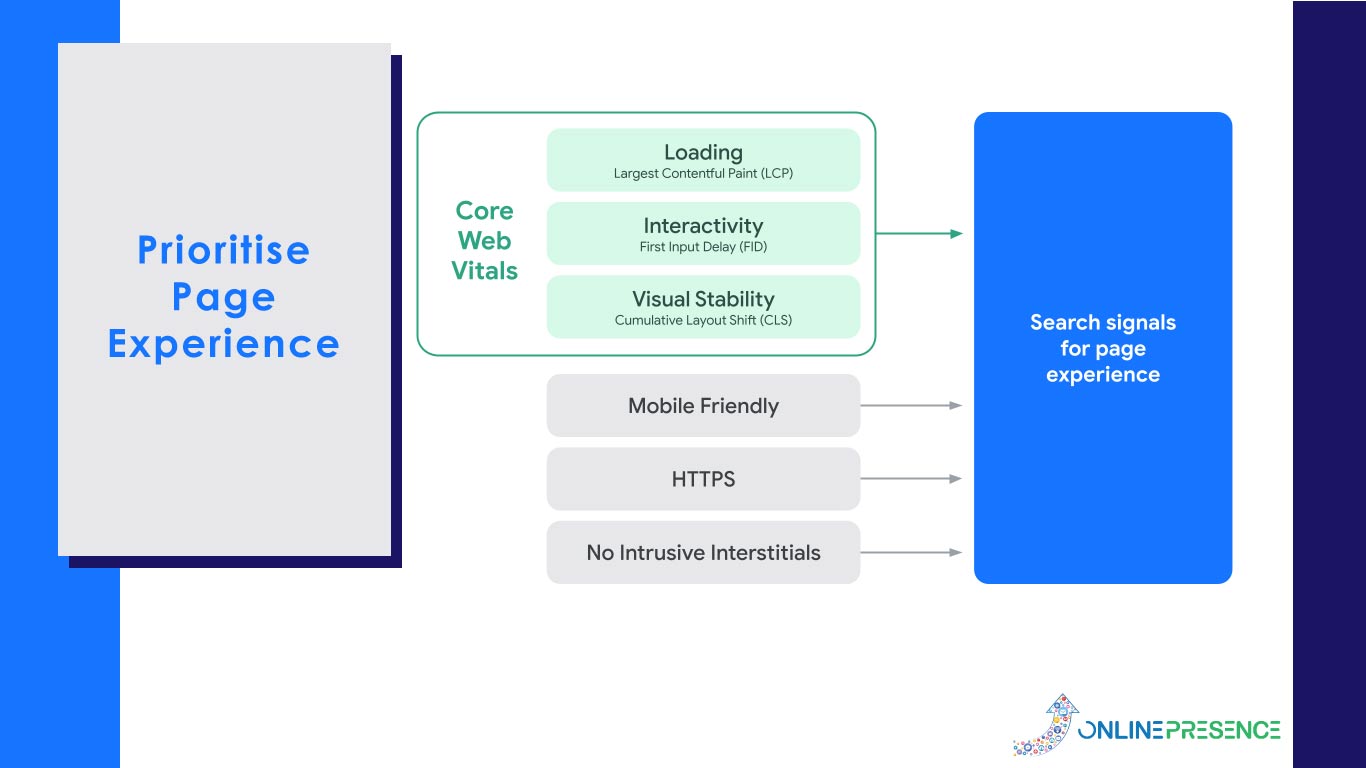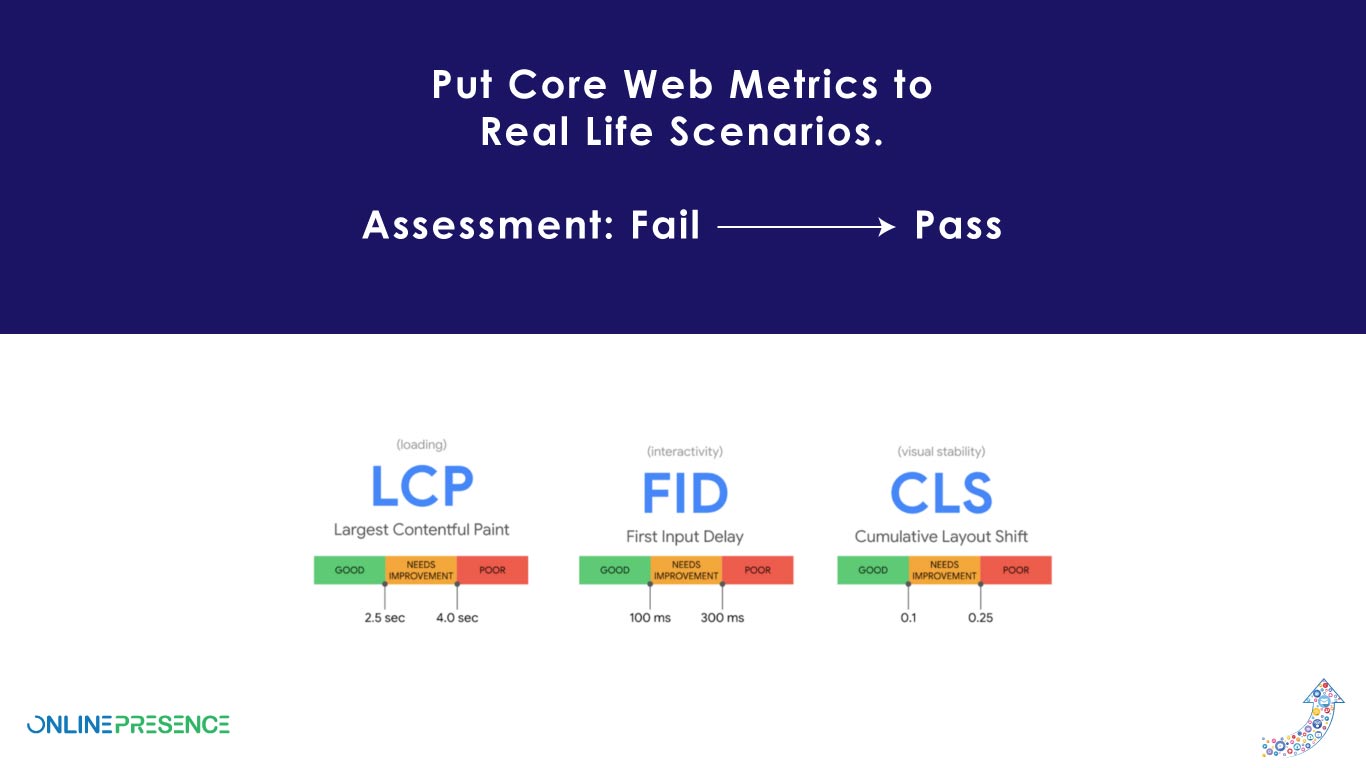Did you know that if a website takes longer than six seconds to load, half of the visitors will leave?
In actuality, while it may sound radical to you, it’s actually quite realistic. People in today’s always-online society have high expectations for convenience and speed, particularly when using their mobile devices. That’s what Google says, too. Signals from the page’s experience, such as how quickly it loads, are now taken into account by search engines when determining page rankings (SERPs).
In other words, page experience should be a top priority. Google cares about its users and wants to provide them with a positive experience and the information they seek. This indicator from Google evaluates how well your site is received by its visitors. Gaining more and more traffic gives you more chances to make sales and attract new followers. No matter how great the quality of your material is, the basics of your website are essential to its success. Knowing what’s new on Google might feel like a full-time job. I’m here to be your rock as you go through this difficult time.
Let me explain why you should keep working on Core Web Vitals if you’re having trouble with them. Okay, now we’re going to get down to brass tacks.
Explained: “Core web vitals” and why they’re crucial
The fundamentals of the web might be difficult to grasp, so let’s simplify them.
Google’s page experience score is affected by CWV since it evaluates “how people perceive the experience of engaging with a web page beyond its basic information value.”
There are three indicators that make up Core Web Vitals:
- How long it takes for a page’s principal content, including huge features like a hero photo or header, to load is measured in terms of its Largest Contentful Paint (LCP) or load time. In this game, a decent time is 2.5 seconds or less.
- To measure how much a page’s layout changed after it loaded, we calculate its Cumulative Layout Shift (CLS, often known as visual stability). This metric assesses the consistency of your site’s aesthetics.
- First Input Delay (FID) is the time it takes for a user to take an action on your site (such clicking a link or button) and for the browser to respond to that action.

Core Web Vitals are areas that you may focus on as a business owner, digital marketer, or web developer to better your website and its user experience. Bounce rates increase and rankings drop if your website takes too long to load. That’s why it’s crucial for local businesses to focus on the Core Web Vitals. In addition to improving your website’s visibility and usability, a high CWV score can boost your site’s search engine rankings.
You can get through the Core Web Vitals with a focus on page experience.

As a result, why is it crucial that you persist in your efforts to achieve success on the Core Web Vitals?
When users have a negative CWV metric experience on a website, search engine performance suffers. Your website might have the finest content in the world, but if visitors can’t access it or utilise it properly, Google will penalise you. Since Google is the driving force behind the evolution of the web, it is imperative that CWV and small business SEO work together to increase exposure.
While the worth of search traffic differs from company to company, CWV’s ability to attract interested users to your website at cheap cost and with less effort is priceless. This means that giving Core Web Vitals top attention is essential if you rely on this type of traffic or anticipate its worth increasing. Give your visitors a hassle-free time while they’re on your site to keep Google happy. As competition inside Google increases, it is crucial that the search engine maintain its flexibility.
Why Small Businesses Fail to Achieve Core Web Vitals?
How often do you check to make sure your site is still user-friendly? Let’s get your site up to speed if you’ve been ignoring it.

All images by Philip Walton and Ilya Grigorik
Largest contentful paint (LCP), first input delay (FID), and cumulative layout shift are the metrics discussed earlier that are tracked by Core Web Vitals (CLS). Let’s use these ideas in practical ways. To illustrate why some small businesses SEO struggle with Core Web Vitals, our team has compiled data from a variety of sources.
One-half of the businesses we analysed failed the Core Web Vitals test.
So, let’s take a look at Core Web Vitals and see what happens if you fail them.
When Basic Internet Functions Fail, What Can You Expect?
First of all, there’s no need to freak out. Since the first launch following the Core Web Vitals announcement, several changes have been made. Previously, these standards had only been implemented for mobile search. Google started using desktop page experience as a ranking indication in February 2022. As we work together, you will witness a rise in status and we will be able to help you get to your desired position. While we wait, it would be wise to analyse the unsuccessful sites. In terms of page experience, where are they doing wrong?
Core Vital Measurement: Failed
- 81.24% Layout failure
- 73.49% Largest contentful paint
- 91% First Input Delayed
The greatest contentful paint (LCP) is the most problematic for the failing sites. Sites that don’t pass the LCP should check how long it takes for major components to load. The same goes for images, videos, and fonts. How well they use SEO in Australia to promote their small businesses is also crucial.
Between 12 and 15 percent of Google’s Ranking Algorithm is devoted to search engine optimisation. Google’s updates to its “page experience” algorithm might have a noticeable effect on your site’s search engine rankings. The Core Web Vitals make up the bulk of Google’s page experience signals. Search engine optimisation (SEO) is improved when LCP is quick because users are more likely to trust the page’s claims of usefulness.
In another SEO-related note of interest, we found that certain sites that did not pass Core Web Vitals actually outranked several firms who did. Companies who fared well on Core Web Vitals saw significant increases in monthly organic traffic. While rivals who don’t pass CWV may rank higher for some keywords, passing CWV will benefit the site overall and bring in more visitors. Keep in mind that the site’s speed and organisation are key factors in creating a positive user experience.
What We Learned from Analysing Data About Critical Elements of a Small Business’s Web Presence
Our research showed that small firms who scored well in Core Web Vitals had more authoritative domain names, more inbound links, and a wider variety of generic keyword phrases. To paint a complete picture of the companies we’re highlighting, we analysed data from two tools: CrUX Dashboard, which we used to analyse how users interacted with each company’s website, and PageSpeed Insights, which we used to analyse how fast their desktop and mobile pages loaded.
We were able to observe who did not pass Core Web Vitals and what factors contributed to this conclusion for the brand. After doing the evaluation, we analysed the data for the following insights into what made a brand successful or unsuccessful in the eyes of CWV:
- Largest Contentful Paint
- First Input Display
- Cumulative Layout Shift
- Mobile Users
- Net Organic Traffic
- Domain Rating
- Backlinks
- Referring Domains
Tips on How to Immediately Improve Your Scores on CWV
Nearly eighty-four percent of URLs in the top ten of mobile SERPs in the United States were rated “Poor” or “To improve” by Semrush’s Core Web Vitals reports, the study revealed. Check your site’s metrics with a Core Web Vitals report in Google Search Console before you begin making adjustments to your existing performance. There will be a detailed breakdown of everything that succeeds, fails, or could use some tweaking. After identifying the affected pages, you may proceed with your plan.
One step at a time!
Do LCP first.
This is the typical cause of a low page quality rating. Optimize LCP by delaying the loading of non-essential resources through the use of lazy loading or by removing any unused third-party scripts that slow down page load times.
After that, fine-tune FID.
Reducing the amount of JavaScript on a website improves the user experience, while clearing the browser’s cache makes pages load substantially quicker.
Set size characteristics should be used across all media types to get maximum CLS performance. Various visual media such as movies, pictures, GIFs, infographics, etc. There should be a specific area on your site for advertisements so that they don’t disrupt the reading experience. Core Web Vitals has a complex framework. That being said, chip away at your site’s problems one by one. You will get closer to having a page that passes Core Web Vitals, which is wonderful news.
FREQUENTLY ASKED QUESTIONS
1. Can a small business benefit from SEO?
For local businesses, the answer is yes: SEO does work. Using alternative methods, such as social media to build backlinks to your site, can further simplify SEO for smaller businesses. Using Local SEO Services can also boost your ranking. Your domain’s authority will rise as a result, and so will your search engine rankings.
Given that modern search engines employ complex algorithms to provide users with relevant results, this makes sense. With SEO, you can outrank even your most formidable rivals if you consistently produce high-quality content.
2. Can you explain the three pillars of Core Web Vitals?
Fundamental to Core Web Essentials are these three elements:
- Time required for a page’s primary elements to load is measured in terms of their Largest Contentful Paint (LCP).
- The time that elapses between when a user first interacts with a webpage (by, for example, clicking a link or button) and when the browser displays the result is known as the First Input Delay (FID).
- The degree to which a page’s layout changes after it has been loaded is measured in terms of its Cumulative Layout Shift (CLS).
3. What is a good score on Core Web Vitals?
There is a simple pass/fail verdict for Core Web Vitals. The individual parts of a system must be examined for more precise metrics. For instance, for Largest Contentful Paint, a “good score” is considered anything within 2.5 seconds. You should aim for a value of 0.1 seconds or less for Cumulative Layout Shift. The lag between receiving the first input and processing it should be less than 100 ms.
4. What are the best practices for Technical SEO?
These are some of the other technical SEO best practises that can help a small business’ search engine rankings:
- Optimization of URL structure for content organisation and keyword utilisation.
- Rapid loading of web pages: Good page experience Means fast page load times.
- Cryptographic Sockets Layer/Hypertext Transfer Protocol Secure: A user-safe, encrypted connection.
- Design for mobile devices: Effective for mobile users at any time and in any place
- Selecting a Preferred Topic Area: A central location where people can learn more about your company
Summary
Rollout of Core Web Vitals lends credence to Forbes’ claim that customer experience has supplanted search engine optimisation. In a significant step towards making the web better for everyone, Core Web Vitals was released. These metrics appear to be a significant element of Google’s ranking algorithm and will likely continue to be so. You should keep an eye on them even if you don’t see any issues right now. If a page fails to meet the minimum standards established by Google’s Core Web Vitals, it will still be ranked.
If your site is safe, user-friendly, mobile-optimized, contains valuable material, and does not display annoying advertisements, you will likely pass or perform better on the evaluation. Contact us today to get a FREE SEO Audit to evaluate your Online Presence. The concept behind Google is to direct consumers to the highest quality and most relevant websites. Make sure your site belongs to you by giving visitors the greatest and most useful experience possible.
Are you having trouble with Core Web Vitals and trying to decide whether to give up or not? Let us know! Online Presence is one of the most trusted SEO Company in AU. Our clients span across multiple industries, ranging from IT and Telco, Manufacturing, FMCG to e-Commerce.

